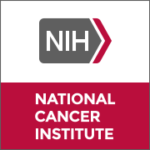The National Cancer Institute (NCI) revealed that young Native Hawaiians and Pacific Islanders (NHPI) experience the highest rates of cancer death among people their age compared to any other race group in the United States.
A manuscript published in the Journal of the National Cancer Institute (JNCI) reports that between 2018 and 2020, NHPI between the ages of 20 and 49 had the highest death rate from any cancer, compared to 20 to 49 year-olds from other racial and ethnic groups (American Indian/Alaska Native, Asian, Black, Latino, or White). The new research highlights the importance of disaggregating Asians and Native Hawaiians/Pacific Islanders cancer data.
Until recently, race reporting at the federal level in the U.S. lumped Americans of Asian, Native Hawaiian, and Pacific Islander ancestry all in a single category. In 1997, the “Asian/Pacific Islander” category was split into “Asian” and “Native Hawaiian or other Pacific Islander.” It took another 10 years to transition fully to using the updated race list on individual states’ death certificates, so statistics like cancer death rates for this new set of races have only been reportable since 2018. Because of Hawaiʻi’s unique multiethnic composition, the HTR, responsible for cancer surveillance in the state of Hawaiʻi, has long collected and reported these more granular statistics.
Under the leadership of new director Naoto Ueno, MD, PhD, the UH Cancer Center is taking a “multifactorial approach” to addressing these disparities. This includes construction on the Early Phase Clinical Research Center, which would allow Cancer Center researchers to conduct innovative trials in Kaka‘ako. It also involves efforts led by the Cancer Center in collaboration with the State, legislators, local healthcare systems, advisory boards, patient advocacy groups, and others.
Photo credit: University of Hawaiʻi Cancer Center
